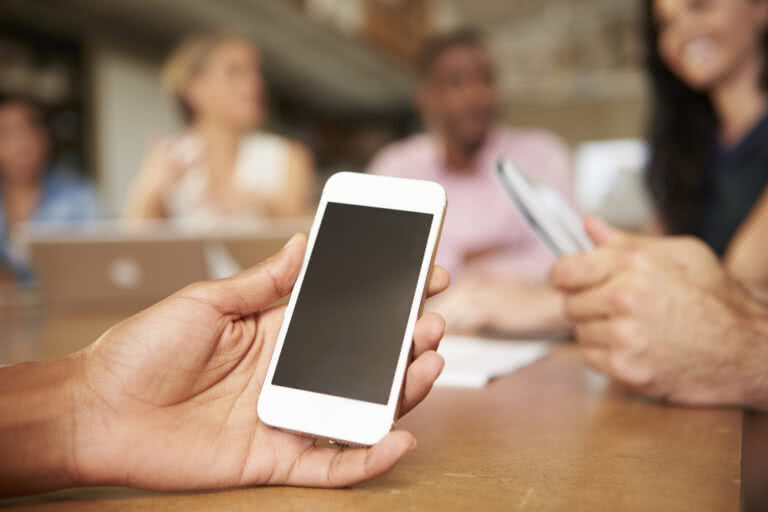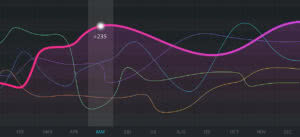If you take a look into the audience at your event, it’s very likely you’ll see a large group of your attendees gazing down at the screens of their smartphones. There is a simple explanation for that – according to eMarketer, we live in a world with a global smartphone audience, which has reached 1.75 billion in 2014.
Most delegates are well equipped, tech-savvy and expect high engagement. With more demanding audiences, conferences are no longer just about the content at the dias. They’re mostly about its delivery and interaction.
That’s where the second screen technology comes in; it represents a thrilling new opportunity to engage your audience and enhance overall event experience.
In this article, you will learn how second screen technology can transform your events and how it can help you engage your attendees in a whole new way.
Second Screen Tech at Events
Let’s start at the very beginning. What are we talking about when we say “second screen tech at events”?
The first screen at a live event is a stage screen or a beamer displaying the content of your speakers. It’s been the centre of the visual broadcast at events for decades.
The second screen is a secondary electronic device used by your audience to access additional content and interact. A second screen is usually a smartphone or a tablet with a dedicated application that allows audience members to engage with speakers and learn more about the event itself.
Let me give you a simple example:
While watching the presentation, you’ve got a strong need to ask a question because you want the speaker to clarify her point. By using a Q&A app you can send the presenter a question right at that moment, without waiting for the Q&A session at the end. Moreover, you want to learn about her background. You simply go to the event app and check her bio. That’s all possible thanks to second screen solutions.
Now let’s take a look at the ways second screen technology can help transform your event…
Empowering Your Participants
Second screen technologies are enabling organisers to take audience engagement to a completely new level. In fact, they have turned the whole presentation dynamic inside out – presentations are no longer one-way broadcast channels where attendees passively listen.
Audience engagement tools turn presentations into two-way streets, putting participants behind the steering wheel so to speak. Q&A and polling tools allow delegates to ask questions, upvote their favourite ones and steer the Q&A in the direction they want it to go.
However, audience engagement is not only about handing the control over to the delegates. It becomes essential for a successfully getting your ideas across.
John Medina’s biological research on the human attention span revealed alarming numbers for event planners and their presenters. He found out that given a presentation of moderately interesting content, the audience’s attention drops significantly within the first 10-minutes.
To tackle this problem, your speakers need to create mental breaks to re-engage the audience. Second screen slidesharing and Q&A platforms are a remedy here. Presenters can share their slides in real-time, prompt people to vote on live polls and thus create soft breaks every 10 minutes to keep the participants alert.
Powerful tip: Tools like sli.do allow your presenters to crowd-source the best questions and get audience insights with live polling. This enables them to better tailor their message and provide the answers your audience is looking for.
Driving attendance with social media
Social media integration is one the most powerful ways to leverage second screen technology and eventually drive attendance to your future events.
There were an incredible 672 million tweets sent during the World Cup in 2014, which made it the biggest social event in media history. Most of those tweets were naturally submitted by people who were watching the games from home or at the pub, but there were also tweets sent live from the stadium. Now guess how many people watching the match at home wanted to be at the stadium when they saw those onsite tweets?
My conservative estimate is approximately 100%.
The same principle works for your event. Encourage your attendees to use their second screens for tweeting from your event to their online audiences. As a result they will create FOMO (fear of missing out) that might prompt their friends to show up at your event next time. In fact, Eventbrite’s research on millennial audiences uncovered that 69% of millennials suffer from FOMO which drives them to attend the events, engage and share.
Powerful tip: Use social media hubs such as SocialWall to encourage tweeting at your events. For many, seeing their tweet on the screen feels like being displayed at the Time Square.
Generating powerful analytics
Event apps help you get measurable insights into your event organisation. Based on the results, you can improve your event in-real time and make onsite adjustments to enhance the attendees’ experience.
Generally, most event apps reveal insights on the attendees’ interests, participation levels, marketing effectiveness or amount of networking, along with many other things. Make sure you determine the right metrics that will indicate the success of your event.
Since interaction becomes the most precious commodity at events, try to focus on the following factors:
– How many people exchanged contact information?
– Which session had the most questions?
– Which content was accessed the most?
– What do the poll results indicate?
– Which sessions are added to their personal agendas the most?
Powerful tip: Naturally you can’t generate analytics if your attendees don’t use your event app. Make sure to start promoting your app as soon as possible to get the audience download and use it. Make sure you know your audience so you can promote the app based on their character. For instance, stress audience engagement and social media if you your audience is primarily composed of millenials.
Collecting audience feedback
These days, the success of your event is being measured by quality rather than quantity. In other words, instead of focusing plainly on the number of delegates, planners should strongly consider how engaged attendees are and what they say about their event.
Therefore collecting your delegates’ feedback becomes a crucial aspect for assessing the success of your present and future events. And the second screen apps can easily help you with that.
Event apps and polling tools allow you to create feedback surveys and share them with your attendees right on the spot. To avoid the bias, you can run them anonymously so anyone can freely express his or her thoughts.
Powerful tip: Prompt your delegates to submit their feedback while they are still at your event. They can fill in the questionnaire after each session if you want to provide feedback to each and every one of your presenters. Or they can simply do it at the very end if you want to gain delegates’ overall impression. To increase the number of submitted forms, give incentives such as free tickets or discounts for your next event.
Conclusion
It’s clear that second screen technology is here to stay, and if embraced and used well, it can help progressive organisers to positively transform the experience for their attendees.
What have your experiences of second screen technology been like? We’d love to hear from you in the comments below.





